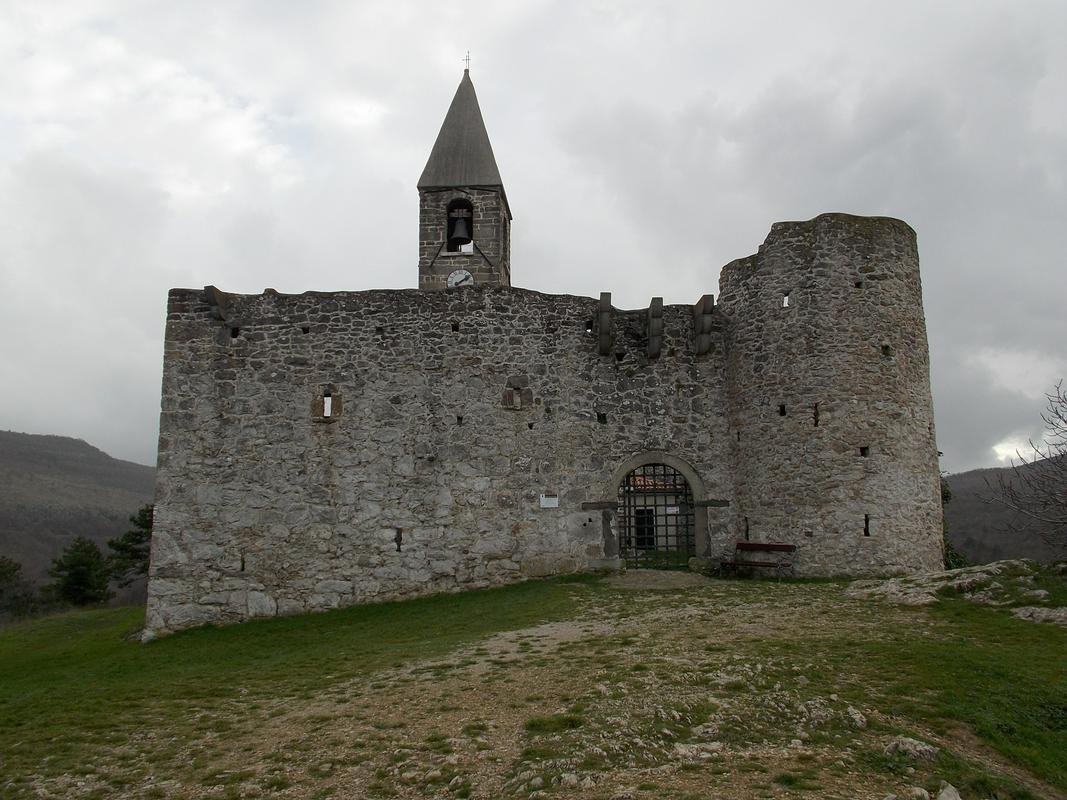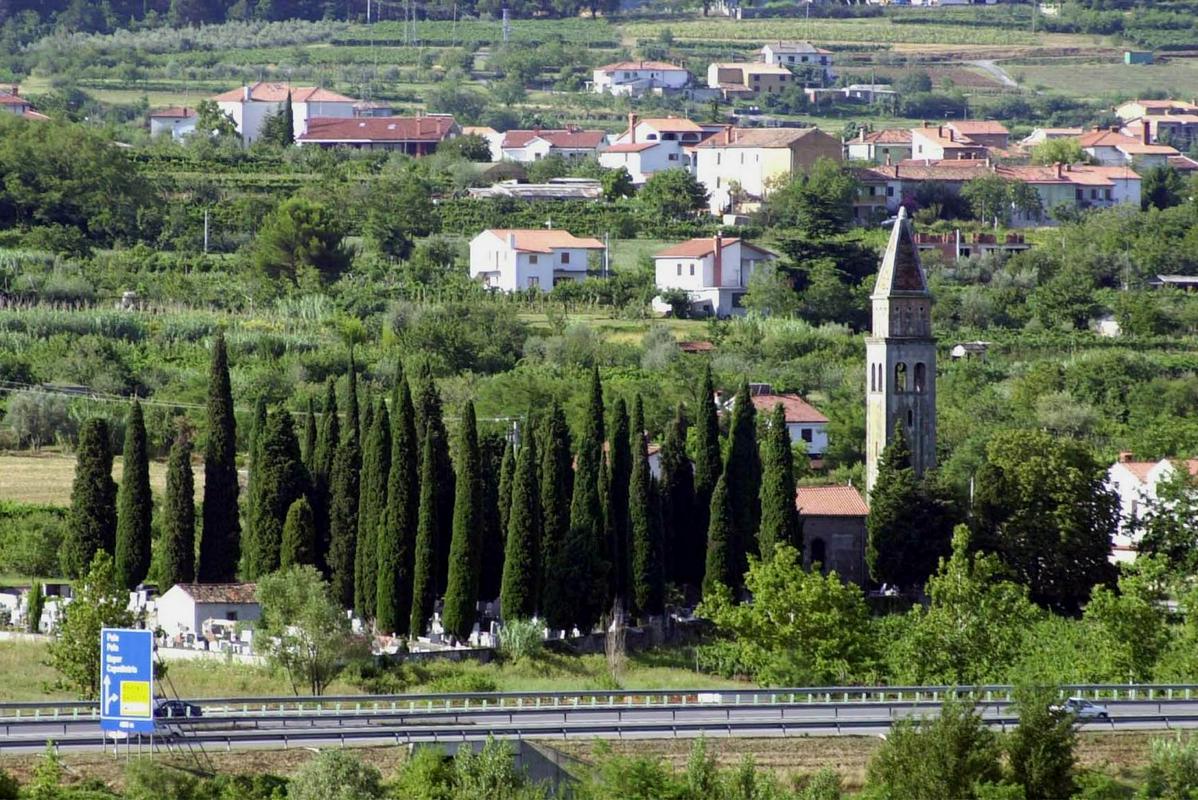

Stretching to the south and east of Koper, the rolling hills and valleys of the Istrian countryside are dotted with ancient villages, Roman ruins, cliff-top churches and countless hiking and cycling trails just waiting to be explored.
You'll likely need your own car, or at least a driver, to reach most of what the region has to offer in a timely fashion, but the wealth and proximity of sights makes renting an easily justifiable expense. We've listed a few of our favourites below, but for a complete run down of all there is to see or do - as well as maps and other info - visit either the Koper or Ankaran tourist offices.
The Istrian village of Hrastovlje is most famous for its Church of the Holy Trinity, which dates back to the 13th century. The entire interior of the the church is covered in frescoes by the 15th century Slovene artist Janez of Castua, including the eerily enchanting Dance of Death or Danse Macabre [editor's note: this is also the title of a great album by an indie dance punk band from Omaha called The Faint].
Most of the equally impressive other works take their themes from the various parts of the Old Testament, and some include inscriptions in Glagolitic - the oldest known Slavic alphabet, developed by Saints Cyril and Methodius in the 9th century. The church is surrounded by 16th century walls with two defence towers, originally built to fend off the Ottomans.
The quaintly picturesque Hrastovlje village, with its traditional Istrian architecture, is also worth a stroll, and as with many of the village in the area it's a popular starting point for hiking, cycling and motorcycle trips into the surrounding countryside. For art lovers two galleries in the centre of the village are also worth perusing, the Jože Pohlen Gallery and the Victor Snoj Gallery.
Črni Kal
The village of Črni Kal lies just off the main motorway a dozen or so kilometres east of Koper, at the natural border of the Karst region. For most visitors, the most immediately noticeable feature of the area, is the enormous Črni Kal Viaduct. Completed in 2004, at 1065m long and 95m high, it's currently the longest bridging structure in the country.
Conspicuously perched on the rocky cliffs above the village are the remnants of an 11th century fortress, which was part of the defence system of the Venetian Republic, while on another nearby hill there's the odd-looking bell tower of the Baroque Church of St Valentine. Dating from 1680, the tower now has a noticeable lean to it, and is secured in place by steel wires.
The village itself, has typical Istrian-Karst architecture with numerous decorative stone details. One house in particular, the so-called Benkova Hiša, is officially considered to be the oldest farmhouse in Slovene and the earliest example of Slovene folk architecture, dating from 1489. The rocky slopes above the village offer over 100 climbing routes of various levels of difficulty, and provide spectacular views of the valleys and hills below leading towards Koper and the sea, and there are even more hiking and cycling opportunities in the surrounding countryside.
Bertoki
Located just off the Koper-Trieste road near the Rižana River, Bertoki is a small settlement formerly known as Rižan-Lazaret or simply Lazaret. The village boasts a gorgeous little parish church dedicated to Mary's Assumption, which displays the 400 year-old 'Crucified Christ' painted by an unknown local artist. Next to the church is a Venetian-style bell tower added in the 18th century. The area was once famous as for the sprawling summer manors that belonged to the noble families of Koper, and a tree-lined promenade leading to the church still remains from this time.Today Bertoki is home to the only surviving colonial estate in the Primorska region, which is a protected cultural heritage site. The nearby Škocjanski Zatok nature reserve (established in 1998) is easily combined with a visit to the village.

































































